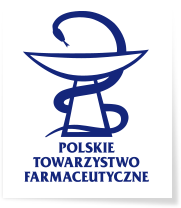Marika Więcek, Dorota G. Piotrowska, Michał Kołodziejczyk, Iwona E. Głowacka
Choroba Alzheimera - przegląd substancji leczniczych i ich pochodnych
2024-02-29
Choroba Alzheimera (AD) należy do chorób neurodegeneracyjnych. Pomimo że pierwszy przypadek choroby Alzheimera odnotowano przeszło wiek temu, nadal pozostaje ona schorzeniem o nie do końca poznanej etiologii. Istnieje kilka hipotez dotyczących procesu neurodegeneracji, jednak z uwagi na brak dostępności modeli in vivo nie jest możliwe podanie konkretnej przyczyny występowania choroby Alzheimera u ludzi. Dotychczas opisano zaledwie kilka specyficznych zmian w organizmie pojawiających się w przebiegu tej choroby, natomiast nie opracowano skutecznych leków mogących zatrzymać jej rozwój. Działanie aktualnie stosowanych leków ograniczone jest jedynie do poprawy funkcji poznawczych i ogólnego samopoczucia pacjentów. Do tej pory w leczeniu choroby Alzheimera zatwierdzono cztery substancje lecznicze: donepezil, rywastygminę, galantaminę i memantynę.
W niniejszym artykule zaprezentowano krótką charakterystykę dostępnych na rynku farmaceutycznym leków stosowanych w leczeniu choroby Alzheimera, jak również wybranych substancji będących w III fazie badań klinicznych. Ponadto, w pracy przedstawiono strategię ligandów wielofunkcyjnych wraz z opisem aktywności wybranych związków zawierających w swojej strukturze fragment cząsteczki jednego z leków stosowanych w terapii choroby Alzheimera, tj. donepezilu, rywastygminy lub galantaminy. Opisano wyselekcjonowane związki zsyntezowane na przestrzeni ostatnich pięciu lat.
Biorąc pod uwagę wieloczynnikowy charakter choroby Alzheimera, wiele grup badawczych wykorzystuje strategię wielofunkcyjnych ligandów, które ukierunkowane są na więcej niż jeden cel biologiczny. Dużą grupę ligandów wielocelowych stanowią pochodne zawierające w swojej strukturze fragment jednego z inhibitorów acetylocholinoesterazy. Fragmenty te łączone są z różnego rodzaju związkami o znanym działaniu biologicznym. W rezultacie otrzymywane są pochodne wykazujące wielokierunkowe działanie, najczęściej właściwości inhibicyjne w stosunku do cholinoesterazy oraz hamujące proces agregacji amyloidu β, a także działanie antyoksydacyjne i neuroprotekcyjne.
Słowa kluczowe: choroba Alzheimera, inhibitory cholinoesterazy, donepezil, rywastygmina, galantamina, memantyna, ligandy wielofunkcyjne.
© Farm Pol, 2023, 79(12): 789–800
Alzheimer’s disease – a review of medicinal substances and their derivatives
Alzheimer’s disease (AD) is a neurodegenerative disorder. Although the first case of Alzheimer’s disease was recorded over a century ago, the etiology of the disease remains unknown. There are several hypotheses regarding the process of neurodegeneration, however, it is impossible to provide a specific cause of Alzheimer’s disease in humans, due to the lack of in vivo models. Only a few specific changes in the body occurring in the course of this disease have been described so far, and no effective drugs have been developed to stop its progression. The effect of the currently used drugs is limited only to improving the cognitive functions and general patients’ well-being. Four medicinal substances have been approved for the treatment of Alzheimer’s disease so far, namely, donepezil, rivastigmine, galantamine, and memantine.
In this article, a brief description of marketed drugs used for the treatment of Alzheimer’s disease is presented as well as selected substances in phase III clinical trials. Moreover, a strategy of multifunctional ligands along with a description of the activity of selected compounds containing in their structure a moiety of one of the drugs used in the treatment of Alzheimer’s disease, namely, donepezil, rivastigmine, or galantamine, is presented in the paper. Selected compounds synthesized over the last five years are described.
Taking into account the multifactorial nature of Alzheimer’s disease, the multifunctional ligands strategy directed at more than one biological target is used by many research groups. A large group of multi-target ligands is based on derivatives containing in their structure a moiety of selected acetylcholinesterase inhibitors. These moieties are combined with various types of compounds with known biological activity. As a result, derivatives with multi-target effects are obtained, mainly cholinesterase inhibitory properties and inhibition of the -amyloid aggregation process, as well as antioxidant and neuroprotective effects.
Keywords: Alzheimer’s disease, cholinesterase inhibitors, donepezil, rivastigmine, galantamine, memantine, multifunctional ligands.
© Farm Pol, 2023, 79(12): 789–800

